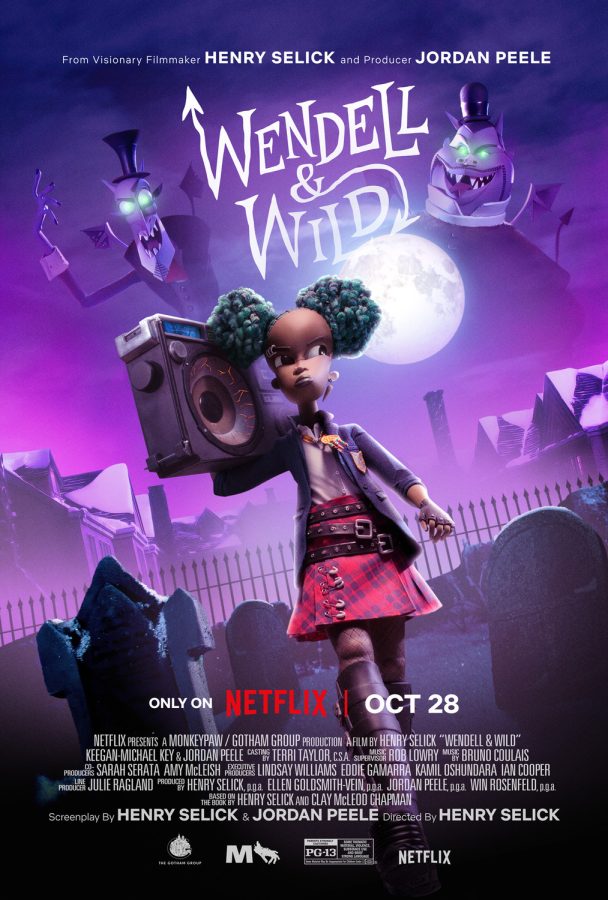Any excitement I had for Wendell & Wild was greatly misplaced

More stories from Alysse Calabio
This is the poster for the movie with Kat in the center and Wendell and Wild on either sides of her
Some movies, no matter when they were released, will be perpetually watched: they are timeless.
Coraline and The Nightmare Before Christmas are two movies I have found myself watching every year, almost without fail. Time and time again, I fall in love with every aspect of them both. So when I learned that Henry Selick, the director of both movies, was releasing a new film, I was more than thrilled; however, I quickly discovered that my excitement would have been better reserved for other things.
The stop-motion animation—Wendell & Wild—begins with the main character, Kat Elliot (Lyric Ross), and her parents getting into a fatal accident resulting in her parents dying. Struggling to live with the guilt of “killing” her parents, she lives between jail and homes until she finds herself back in her childhood town for her new school’s “break the cycle” program. However, she realizes her village is not the same as when she was last there. The town was bought out by a private prison complex and, consequently, turned into a barren ghost town.
While at her new school, Kat is approached in her dream by Wendell (Keegan-Michael Key) and Wild (Jordan Peele)—both of which are demons. The two offered to bring Kat’s parents back using a magic hair cream in exchange for her help in bringing them to the human world. With one simple ‘yes,’ Kat’s entire world is flipped upside down.
Almost immediately, the shortcomings of the film began to present themselves. During the first ten minutes and last two minutes, Kat narrates her thoughts. Narration can be an effective device; it gives the movie the ability to convey a backstory or an important idea from a character. At times, Kat’s narrations presented new information to the audience. Even so, there were still moments when she stated nothing but the obvious leaving an impactful scene having an exiguous impact.
The movie’s futile attempt at narration is not its only downfall: Wendell and Wild—the characters the film was named after—are more than underwhelming. Wendell and Wild are constantly bossed around by others, seldom ever thinking for themselves. They have almost no sense of themselves.
On top of Wendell and Wild’s lack of individuality, their character growth is superficial. They only have a change of heart once they learn that they have been lied to. Wendell and Wild’s character growth seemed only to be fueled by revenge.
Even though Wendell and Wild’s characters are disenchanting, they are still understandable. With the minute, yet requisite character Bearz-A-Bub (Phoebe Lamour), I was left with more questions than answers.
Bearz-A-Bub was a demonic teddy bear that gave way to the communication between Kat and the demons. That alone presents itself with a multitude of questions: why did it choose Kat? Why now rather than earlier? Where did this teddy bear originate? Did someone create this bear? Is it one-of-a-kind? A plethora of questions come to mind, yet throughout the movie, none of them get answered.
Despite all that, some aspects of the film present themselves as positive. The main one that stood out, even from the start of the movie, was the diversity in the characters. There are characters from all different races, religions, and body types; Kat is Black, and her new-found friend, Raúl (Sam Zelaya), is Latino and transgender. The movie acknowledges the struggles that some minorities face, but their struggles of being minorities are not the primary focus of the plot—especially with Raúl.
Wendell & Wild is a quintessential example of how to handle having minority characters within a film.
In the end, some movies will be forever timeless. Sadly for Wendell & Wild, that is a title it can only dream to have.

Alysse Calabio is going on to her second and final year on The Central Trend. If there's anything she loves more than the world, it would be experiencing...

























































































